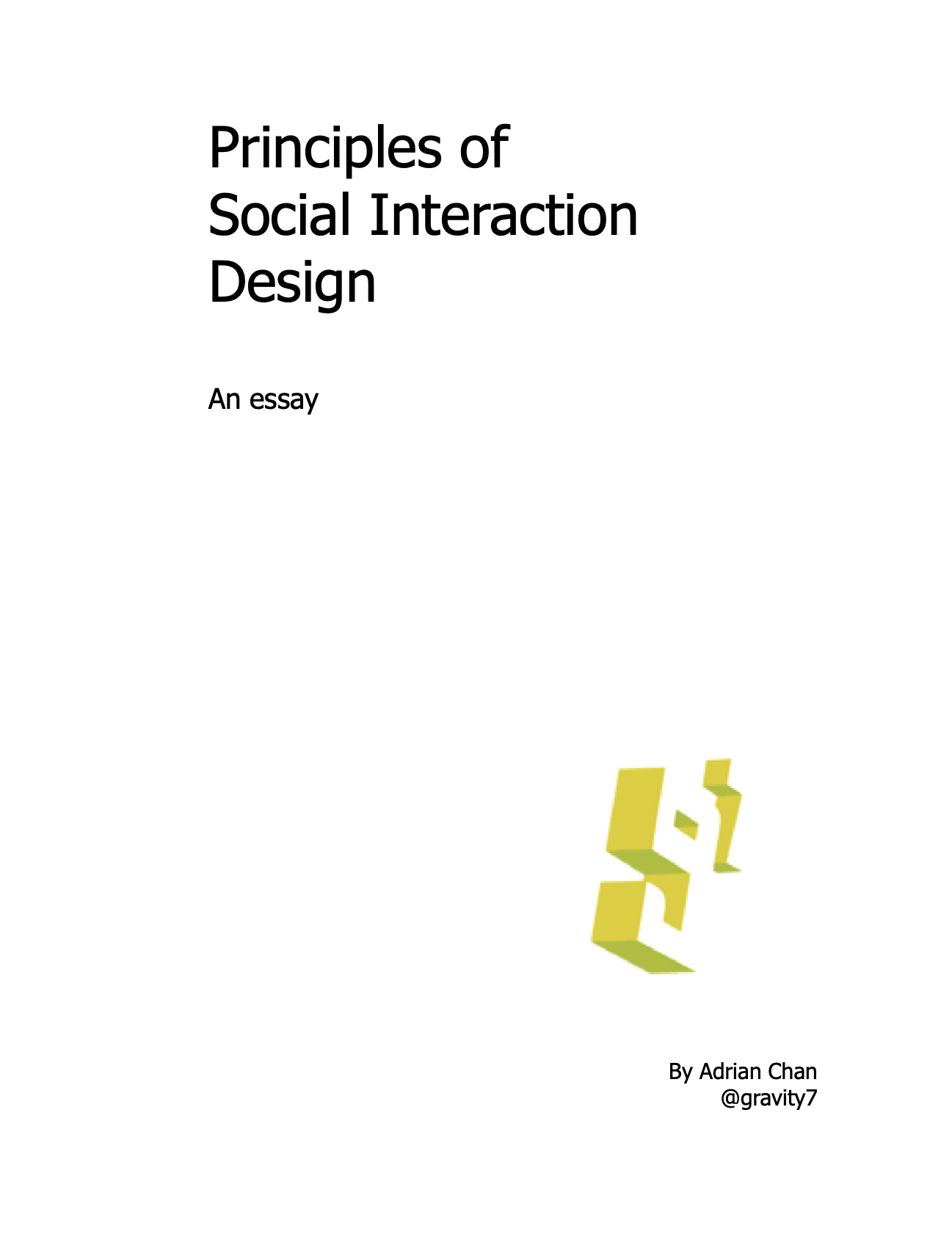 Imperfect and unfinished as any project on contemporary products will be, my Principles of Social Interaction Design is now available for free download. This project has taken a couple of years, and in places bears the marks of a theory worked out over time. Some of my core concepts appeared in my blog posts first. These include the idea of frames — for both conceptualizing interactions, as well as for design thinking. Concepts of mediation, of symbolic tokens, of realtime streams may also be familiar from topics I have blogged about over the years. I have developed these into simple logics.
Imperfect and unfinished as any project on contemporary products will be, my Principles of Social Interaction Design is now available for free download. This project has taken a couple of years, and in places bears the marks of a theory worked out over time. Some of my core concepts appeared in my blog posts first. These include the idea of frames — for both conceptualizing interactions, as well as for design thinking. Concepts of mediation, of symbolic tokens, of realtime streams may also be familiar from topics I have blogged about over the years. I have developed these into simple logics.
Now, as always, I believe that mediation is real — mediated interactions should not be understood by their simple reference to face to face situations. Mediation makes a real and measurable difference. And this difference is experienced and produced as a mental engagement, by means of which users fabricate, imagine, project, internalize, and much more, their interpretations of others and of social worlds in general.
As always, I believe that any designer of social tools should appreciate the multi-faceted manner in which these experiences become motives; orientations; activities; and ultimately, social practices. The user experience is, in social interaction design, both more necessary, and farther from reach.
For all its faults, this is an attempt to collect my thoughts on social interaction design into a single piece. One can do more with an argument in this format than one can with a blog post. Time permitting, I will revise this project as practices and tools change.
Many sources were drawn upon for this project: from contemporary designers/thinkers/bloggers to canonical sociological, psychological, and linguistic frameworks. My effort to pull together theoretical and conceptual architecture from outside the design world, in order to accommodate the needs of both mediated user experiences and emergent social practices, is unorthodox. Hence I am calling this an essay. I am excited to see it develop over time.

Davide 'Fol' Casali
February 19, 2012 at 12:26 amThat’s awesome, I’ll read it asap! 🙂
It’s very interesting for me because with Gianandrea Giacoma I formalized a few years ago Motivational Design, a theoretical and practical approach to social experience design and now I can finally see your work with a single overview and check the common parts and the differences in a more organized way.
I’d love to link you the full book, but unfortunately it’s in italian. Up until now there are some posts that detail specific parts of it, but I have also a summary that might still be of some interest to you: http://www.scribd.com/doc/19682712/Motivational-Design-Synthesis-15-en
We should definitely try to create a common ground in order to create a proper discipline – even with multiple approaches, why not. 🙂
clan luu on sale
April 11, 2012 at 7:54 amThanks alot for sharing this with us, was a really interesting post.
Grontly
April 20, 2012 at 9:38 amWhen I got to “User Personas 2.0” I cracked up laughing and closed your silly little PDF